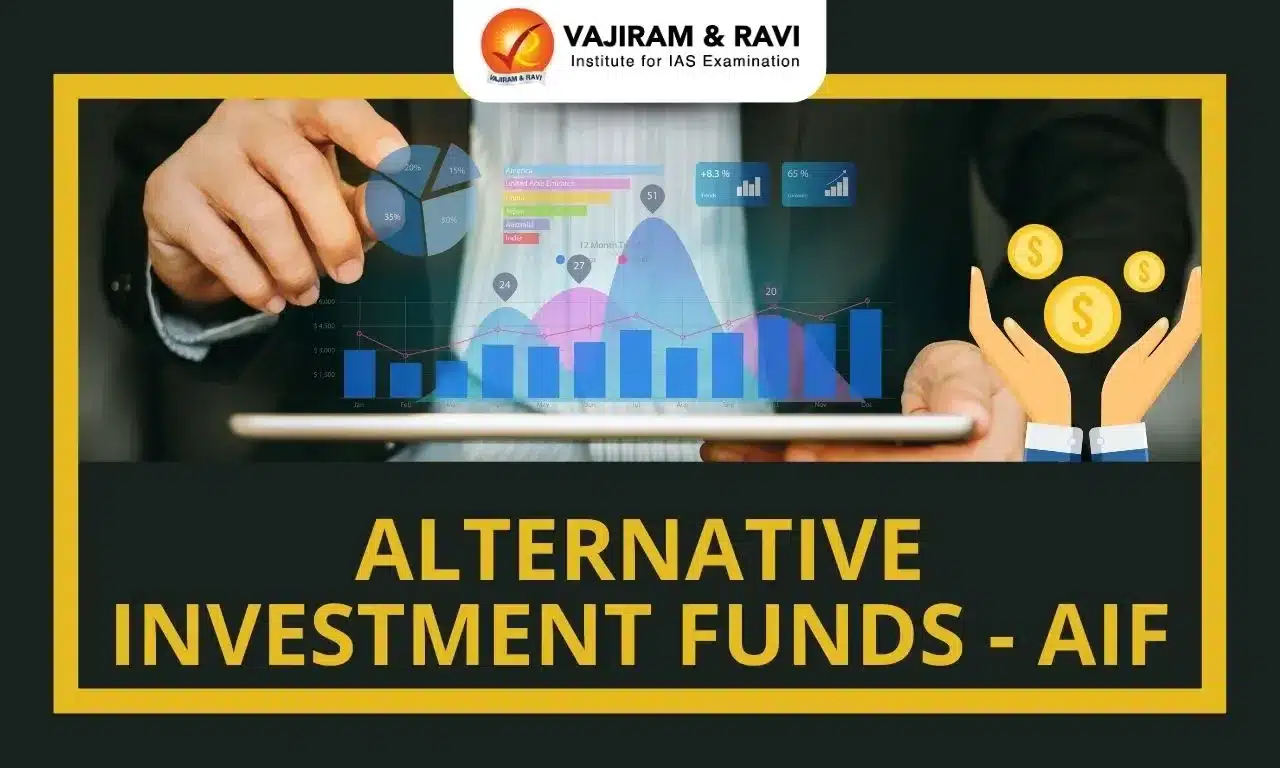Alternative Investment Funds (AIFs) are privately pooled investment vehicles that offer an alternative to traditional investment options like mutual funds and stocks. AIFs provide opportunities for higher returns and greater diversification, making them attractive to investors seeking exposure to non-traditional markets.
AIFs are classified into three categories based on their investment strategies and risk profiles. These funds cater to various investment goals, with each category offering distinct benefits and challenges. AIFs also play a vital role in driving economic growth by supporting startups, SMEs, and infrastructure development.
What are Alternative Investment Funds?
Alternative Investment Funds (AIFs) are privately pooled investment vehicles that collect funds from investors, whether Indian or foreign, for investing in various asset classes like private equity, venture capital, real estate, hedge funds, etc. Unlike traditional investments such as mutual funds or stocks, AIFs offer exposure to alternative investment opportunities, providing diversification and the potential for higher returns.
- Exemptions: AIFs do not include funds that fall under the SEBI (Mutual Funds) Regulations, 1996, SEBI (Collective Investment Schemes) Regulations, 1999, or any other regulations established by SEBI for managing fund activities.
- Regulation: AIFs in India are regulated by the Securities and Exchange Board of India (SEBI) under the SEBI (Alternative Investment Funds) Regulations, 2012.
Alternative Investment Funds Types
According to SEBI, AIFs are classified into three categories: Category I, Category II, and Category III. These categories differ in their investment strategies, risk levels, and regulatory benefits. Each category is designed to address different investment objectives, with varying degrees of government incentives and restrictions, allowing investors to choose funds that match their financial goals and risk appetite.
Category I AIFs
Category I AIFs invest in ventures that are socially or economically beneficial. These funds support sectors like infrastructure, startups, small and medium enterprises (SMEs), and social ventures. Key types of Category I AIFs include:
- Venture Capital Funds (including Angel Funds): These funds invest in early-stage startups, providing capital to innovative businesses with high growth potential. Angel funds specifically target seed-stage startups and emerging entrepreneurs.
- SME Funds: These funds provide financing to small and medium-sized enterprises (SMEs) that face challenges in accessing capital.
- Social Venture Funds: These funds focus on investments that address social issues, aiming for both financial returns and positive social impact. They invest in businesses that prioritize sustainability and community development.
- Infrastructure Funds: These funds invest in large-scale infrastructure projects such as roads, bridges, and renewable energy.
Category II AIFs
Category II AIFs include funds that do not take excessive leverage and are focused on private equity, debt, or other similar investments. Various types of funds registered as Category II AIFs include:
- Real Estate Funds: These funds invest in residential, commercial, or industrial real estate projects, aiming for returns through capital appreciation or rental income.
- Private Equity Funds: These funds invest in established companies, providing capital for growth, restructuring, or expansion in exchange for equity ownership.
- Distressed Asset Funds: These funds invest in distressed or non-performing assets, seeking to generate returns by restructuring or turning around these assets.
- Fund of Funds: These funds invest in other AIFs, providing investors with diversified exposure to a variety of underlying alternative investment strategies.
Category III AIFs
Category III AIFs include hedge funds and funds employing diverse trading strategies. These funds use leverage to invest in both listed and unlisted derivatives and engage in high-risk investments to seek short-term capital gains. Key types of Category III AIFs include:
- Hedge Funds: These funds use a wide range of strategies, such as short-selling, leverage, and derivatives, to generate high returns. They often target both traditional and alternative assets, with a focus on high-risk, high-reward investments.
- PIPE Funds: Private Investment in Public Equity (PIPE) funds invest in publicly traded companies through private placements, typically at a discounted price.
Alternative Investment Funds Benefits
AIFs offer several benefits that make them attractive to certain types of investors. They provide access to diverse asset classes and unique investment opportunities that are not typically available through traditional investment vehicles. Key benefits include:
- Diversification: AIFs allow investors to gain exposure to alternative asset classes such as real estate, venture capital, and hedge funds, which are less correlated with traditional markets.
- High Return Potential: With their focus on niche markets and higher-risk investments, AIFs can offer significant returns, especially in private equity and venture capital funds.
- Government Support: Certain AIFs often benefit from government incentives and tax relief, encouraging investments in sectors like infrastructure and SMEs.
Alternative Investment Funds Drawbacks
Despite the potential for high returns, AIFs also come with certain drawbacks. These funds are typically less liquid than traditional investments and may have longer investment horizons. Key drawbacks include:
- Higher Risks: Category III AIFs, which employ leverage and complex strategies, carry higher risks, making them suitable only for investors with a higher risk tolerance.
- Limited Liquidity: AIFs generally have long lock-in periods and may not be as easily tradable or liquid as traditional investments like stocks or mutual funds.
- Higher Fees and Expenses: Due to their limited accessibility, AIFs often come with higher management and performance fees, especially in private equity and hedge funds. These fees can significantly reduce the overall returns for investors.
Alternative Investment Funds and Economic Growth
AIFs play a crucial role in fueling economic growth by providing funding to startups, SMEs, and infrastructure projects. Category I AIFs, in particular, help boost entrepreneurship and innovation by investing in high-potential sectors. Additionally, AIFs attract foreign direct investment (FDI), contributing to India's growing economy by providing international investors with access to Indian markets through specialized funds.
Alternative Investment Funds UPSC PYQs
Q1. With reference to investments, consider the following: (UPSC Prelims 2025)
- Bonds
- Hedge Funds
- Stock
- Venture Capital
How many of the above are treated as Alternative Investment Funds?
a) Only one
b) Only two
c) Only three
d) All the four
Answer: (b)
Last updated on December, 2025
→ Check out the latest UPSC Syllabus 2026 here.
→ Join Vajiram & Ravi’s Interview Guidance Programme for expert help to crack your final UPSC stage.
→ UPSC Mains Result 2025 is now out.
→ UPSC Notification 2026 is scheduled to be released on January 14, 2026.
→ UPSC Calendar 2026 is released on 15th May, 2025.
→ The UPSC Vacancy 2025 were released 1129, out of which 979 were for UPSC CSE and remaining 150 are for UPSC IFoS.
→ UPSC Prelims 2026 will be conducted on 24th May, 2026 & UPSC Mains 2026 will be conducted on 21st August 2026.
→ The UPSC Selection Process is of 3 stages-Prelims, Mains and Interview.
→ UPSC Result 2024 is released with latest UPSC Marksheet 2024. Check Now!
→ UPSC Prelims Result 2025 is out now for the CSE held on 25 May 2025.
→ UPSC Toppers List 2024 is released now. Shakti Dubey is UPSC AIR 1 2024 Topper.
→ UPSC Prelims Question Paper 2025 and Unofficial Prelims Answer Key 2025 are available now.
→ UPSC Mains Question Paper 2025 is out for Essay, GS 1, 2, 3 & GS 4.
→ UPSC Mains Indian Language Question Paper 2025 is now out.
→ UPSC Mains Optional Question Paper 2025 is now out.
→ Also check Best IAS Coaching in Delhi
Alternative Investment Funds FAQs
Q1. What is an Alternate Investment Fund?+
Q2. What is an example of an Alternative Investment?+
Q3. What are the 3 categories of AIF?+
Q4. Who controls AIF?+
Q5. What are the disadvantages of AIF?+

















